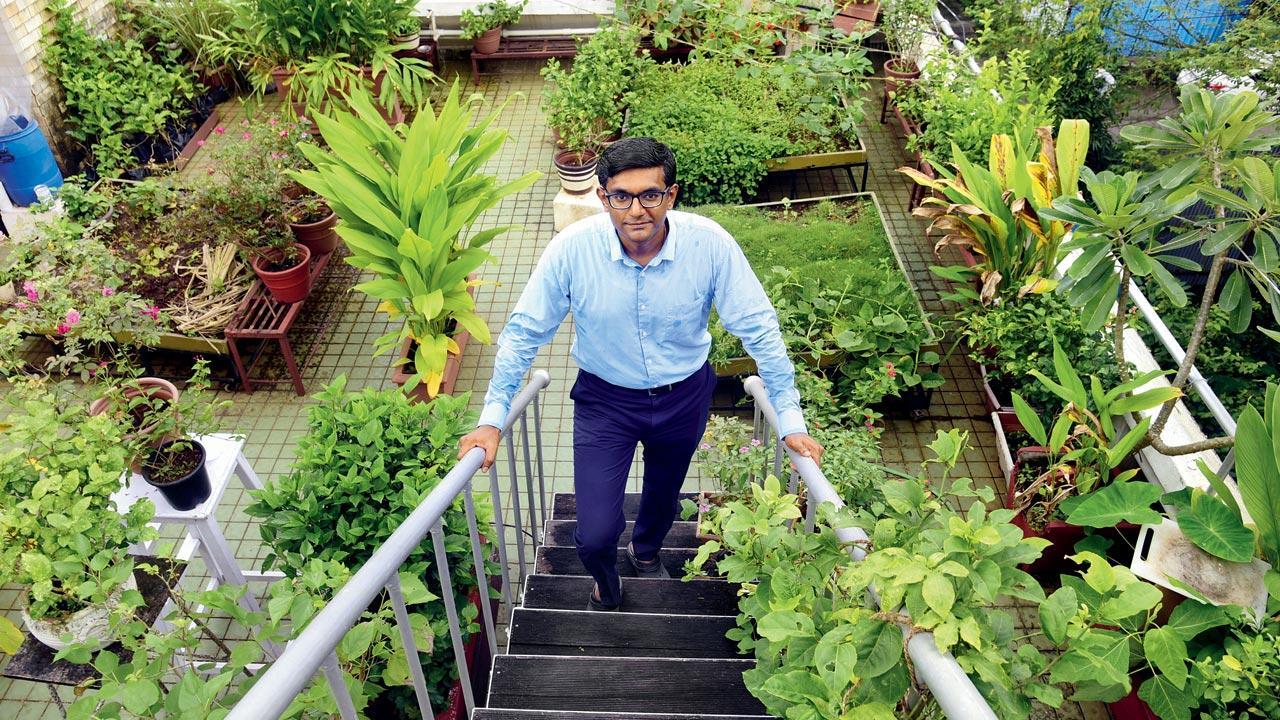Home / Mumbai-guide / Things To Do / Article /
Why this Chembur urban gardener started a micro farm
Updated On: 08 October, 2022 10:02 AM IST | Mumbai | Sammohinee Ghosh
A Chembur resident’s actionable micro farm model prompts the need to turn urban corners into spaces of environmental benefits

Chetan Soorenji’s terrace farm is a comprehensive and sustainable ecosystem. Pics/Atul Kamble
The chirping of birds at dawn, trickling of water down a rill or whooshing of wind through the boughs — the therapeutic effects of nature sounds have been researched and at length. Yet urbanites get to explore them sparingly. Chetan Soorenji, a corporate employee, has managed to orchestrate a symphony of such sounds in his home in Chembur; an area referred to as Mumbai’s gas chamber for its poor air quality. It started with a patra, blue fibre and metallic sheets that veil city roofs. That brings us to the “how?” Soorenji takes us through a summer when a sea of possibilities was presented to this family
of naturalists.
 Passion fruits ready for harvest
Passion fruits ready for harvest




